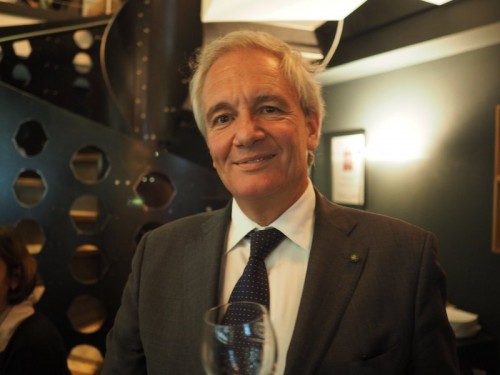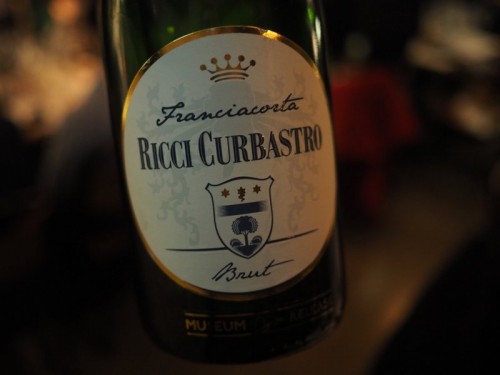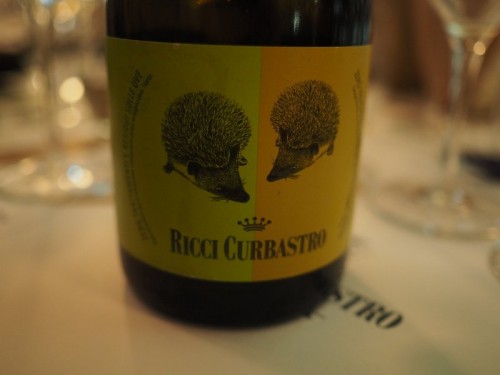
As a fan of sparkling wines, I was pleased to get the chance to meet Riccardo Ricci Curbastro and taste through his wines, at a masterclass hosted by Vini Italiani in South Kensington.
The Ricci Curbastro family have been growing grapes in Franciacorta since the 14th century, but sparkling Franciacorta as we now know it is relatively young. Ricci Curbastro were one of the first 11 producers of this wine style, which began commercially in 1967 when they formed the DOC. Franciacorta achieved DOCG status in 1995, when there were 45 producers. Now there are 115. The emergence of sparkling wine gave the region, which is located in Lombardy in northern Italy, a much needed renaissance.
The modern era for the region began when monks from Cluny settled here and began planting vineyards. With them they brought Chardonnay and Pinot Blanc. And here’s another interesting fact: apparently the first book ever about sparkling wine comes from Franciacorta, when in 1570 a physician wrote about the effects of carbon dioxide on digestion. But until the change in direction 50 years ago, the sparkling wine in the region was mostly made for home consumption, and wasn’t marketed.
The region itself is small and hilly, formed by glaciation, and with Lake Iseo as the northern boundary, in a part of northern Italy that’s famous for its lakes. The soil here changes every few hundred metres, with 60 different profiles, as a result of the glacial activity. Riccardo has vineyards in three different villages. ‘Tasting and creating the blend is like painting,’ he says.

Ricci Curbastro Franciacorta Brut NV Italy
Three years on the lees. Very fresh and linear with good acidity. Bright with a hint of grapefruit. Pure, with clean fresh citrus fruit. Very crisp with super purity. 90/100
Ricci Curbastro Franciacorta Satén Brut 2012 Italy
This has spent four years on the lees. Fresh and vivid with lovely purity. Perfumed and linear with crisp citrus fruit and nice precision and focus, showing direct fruit. 91/100
Ricci Curbastro Museum Release Franciacorta 2006 Italy
This is the same blend as the NV, but it was left on its lees for 8 years, disgorged in March 2015. There’s a lovely refined bready toastiness here with fresh citrussy notes and some richer pear and peach characters. 92/100
Ricci Curbastro Franciacorta Museum Release Satén Brut 2005 Italy
Very pure with subtle toast and meal notes. Lovely acidity and freshness here with some pear and peach fruit. Nice crystalline citrus fruits, with great concentration, weight and purity. 92/100
Ricci Curbastro Franciacorta Museum Release Satén Brut 2006 Italy
Very fine and expressive with fine citrus fruit, a hint of white peach and some lovely lemon and apple. Keen and supple with a beautifully expressive character. 90/100
Ricci Curbastro Dossagio Zero Gulberto 2008 Franciacorta, Italy
Zero dosage, 60% Pinot Noir, 40% Chardonnay. Distinctive stuff. Very fresh and linear with nice precision to the cherry, herb and citrus fruit. Fresh and expressive with nice complexity and lovely purity. Stylish with some depth. 92/100

Ricci Curbastro Zero Trattimenti e Residiu Sulle Uve 2016 Sebino Bianco, Italy
This translates as zero treatments and residues on the grapes, although by law they had to treat against the vector of vine disease flavascens (Scaphoideus titanus), which they did with Bacillus thuringiensis, a natural product. It’s from an 8 year old vineyard that has never been sprayed, and is made from a blend of four varieties that are resistant to disease. The vineyard is in the middle of the village, and it’s now a garden where children can learn about viticulture and trees. Very fresh, pure, lemony and bright with clean citrus fruit. 89/100
These wines are available in the UK from Vini Italiani
2 Comments on The wines of Ricci Curbastro, Franciacorta, Italy
Interesting write-up, thanks. Two small errors: the correct name of the bacillus is Bacillus thuringiensis, and S.titanus is not the flavescens doree (which is a disease) but its vector, which is an insect, a leafhopper. I am a bit surprised that there is a B.thuringiensis preparation that is effective against the leafhopper. I am a bit suspicious of this – I know of preparations that are effective against lepidoptera, beetles, flies & mosquitoes but not leafhoppers.
thanks, corrections made